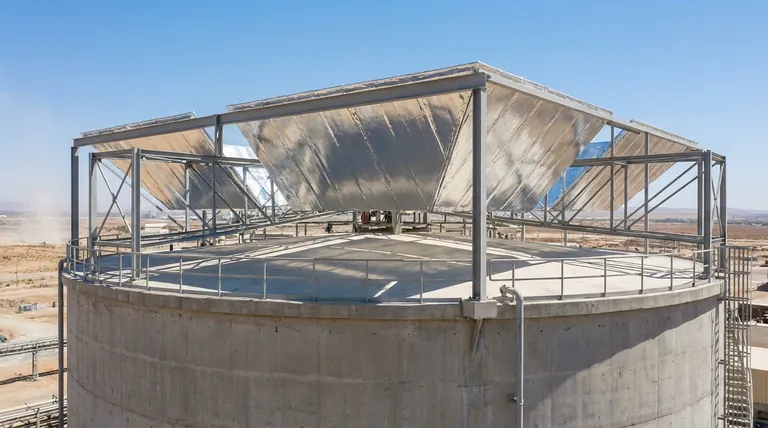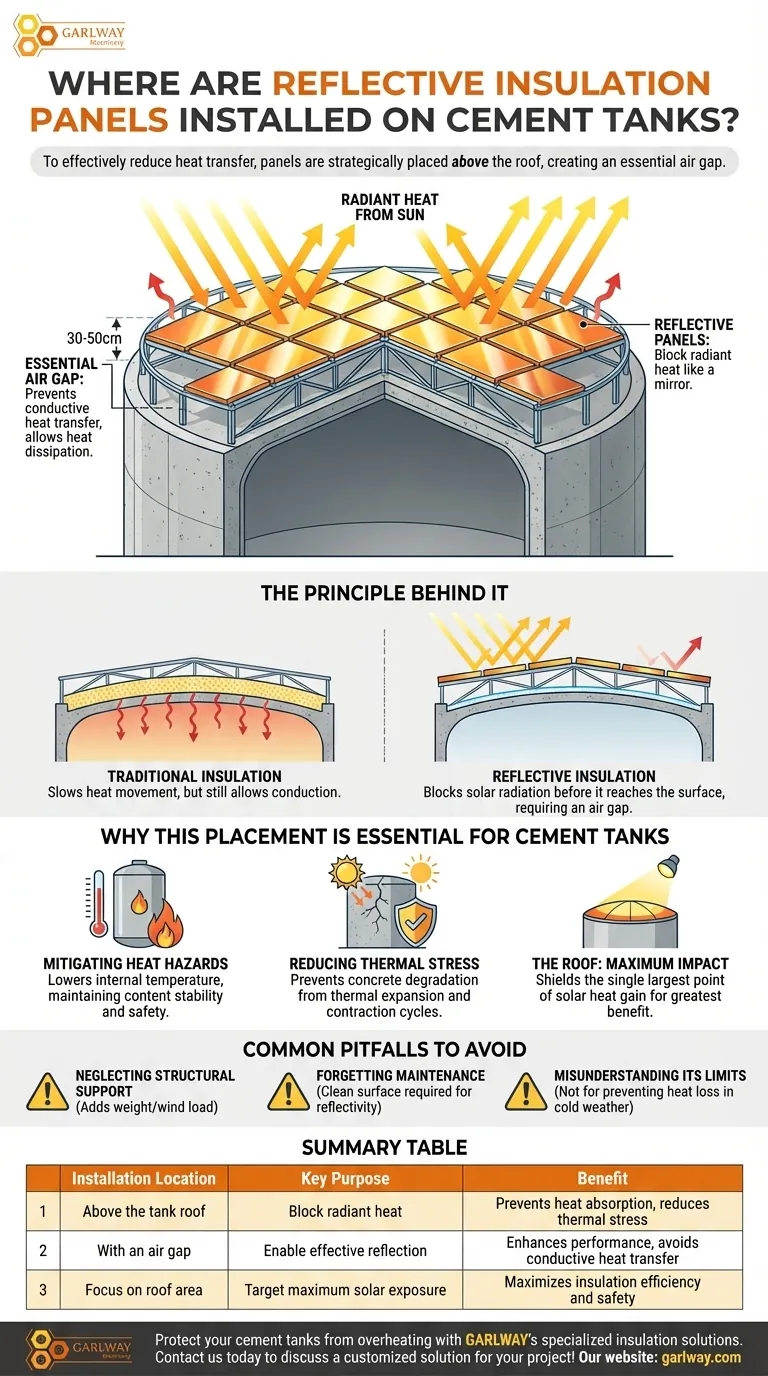To effectively reduce heat transfer, reflective insulation panels are installed at a specific height above the cement tank's roof, not directly on the surface. This strategic placement creates an essential air gap, allowing the panels to block the sun's radiant heat before it is ever absorbed by the tank's structure.
The placement of reflective insulation is less about the tank itself and more about interrupting the path of solar radiation. By installing panels above the roof, you prevent the tank from absorbing external heat, a far more effective strategy than trying to contain heat that has already penetrated the structure.

The Principle Behind Reflective Insulation
It’s About Blocking Radiant Heat
Traditional insulation, like foam, works by slowing down the movement of heat. Reflective insulation works differently; it acts like a mirror to block radiant heat from ever reaching a surface in the first place.
Think of it like a sunshade for a car's dashboard. The shade reflects the sun's energy away, keeping the dashboard cool. The panels on a cement tank serve the exact same purpose on a much larger scale.
The Critical Role of the Air Gap
For a reflective surface to work, it must face an air space. If the panel were placed in direct contact with the tank's roof, heat would simply transfer through conduction, rendering the reflective property useless.
By mounting the panels at a height above the roof, you create this necessary air gap. This allows the panel to reflect solar radiation and for any absorbed heat to dissipate into the air, away from the tank.
Why This Placement is Essential for Cement Tanks
Mitigating Heat-Related Hazards
The primary goal is to reduce the hazards associated with overheating. Many materials stored in tanks can become volatile or build up dangerous vapor pressure when heated by constant sun exposure.
Shielding the tank from solar radiation directly lowers the internal temperature, maintaining the stability of its contents and enhancing overall safety.
Reducing Thermal Stress on Concrete
Constant exposure to intense sun followed by nighttime cooling creates a cycle of thermal expansion and contraction. Over time, this stress can degrade the integrity of the cement.
By blocking the primary source of this heat, the insulation helps to preserve the tank's structural lifespan.
The Roof: The Point of Maximum Impact
A tank's roof receives the most direct and prolonged sunlight throughout the day. It is the single largest point of solar heat gain.
Therefore, focusing the insulation effort on shielding the roof provides the greatest possible benefit for the investment.
Common Pitfalls to Avoid
Neglecting Structural Support
The insulation panels and their mounting system add weight and create wind load. The support structure must be properly engineered to handle these forces without compromising the tank's integrity.
Forgetting Maintenance
For reflective insulation to remain effective, its surface must be relatively clean. A heavy buildup of dust, dirt, or industrial residue can significantly reduce its ability to reflect heat. A plan for periodic inspection and cleaning is essential.
Misunderstanding Its Limits
Reflective insulation is purpose-built to stop radiant heat gain from an external source like the sun. It is not an effective solution for preventing heat loss from within the tank during cold weather, as that involves different modes of heat transfer.
How to Apply This to Your Project
When deciding on your insulation strategy, consider the primary objective you need to achieve.
- If your primary focus is preventing solar heat gain in a hot climate: Installing reflective panels above the tank roof with an air gap is the most direct and effective solution.
- If your primary focus is reducing evaporation loss of stored products: A roof-mounted reflective system is critical, as it directly combats the primary cause of heat-induced vaporization.
- If your primary focus is maintaining stable temperatures in a mixed climate: You may need a hybrid approach, using a reflective roof system for solar gain and traditional insulation on the walls for ambient heat loss or gain.
Ultimately, positioning the insulation to treat the cause—solar radiation—is the key to effectively protecting the tank and its contents.
Summary Table:
| Installation Location | Key Purpose | Benefit |
|---|---|---|
| Above the tank roof | Block radiant heat from the sun | Prevents heat absorption, reduces thermal stress |
| With an air gap | Enable effective reflection | Enhances performance, avoids conductive heat transfer |
| Focus on roof area | Target maximum solar exposure | Maximizes insulation efficiency and safety |
Protect your cement tanks from overheating with GARLWAY's specialized insulation solutions. As a trusted provider of construction machinery and equipment, including winches, concrete mixers, and batching plants, we understand the unique challenges faced by construction companies and contractors globally. Our reflective insulation panels are designed to reduce heat-related hazards, extend the lifespan of your tanks, and maintain product stability. Contact us today to discuss a customized solution for your project!
Visual Guide
